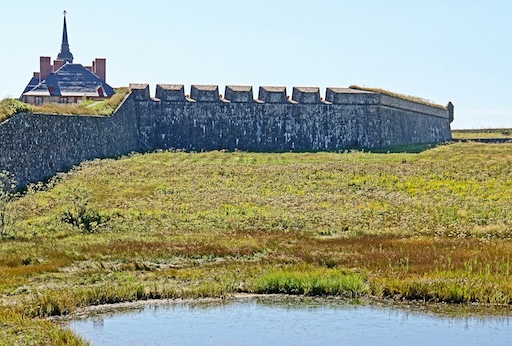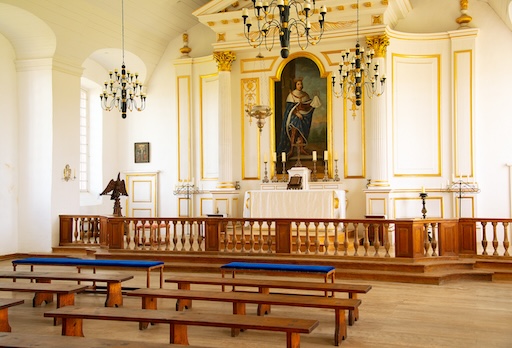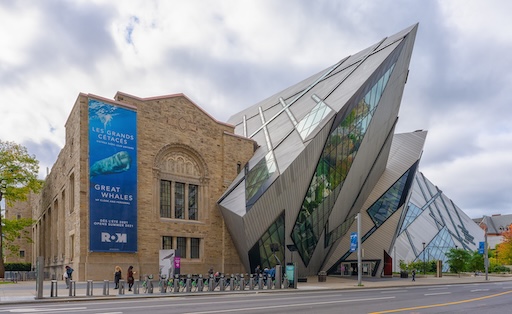
On the rugged coast of Nova Scotia, waves crash, gulls cry, and fog rolls in thick off the Atlantic. It’s easy to imagine that nothing has changed here in centuries—and at the Fortress of Louisbourg, it truly hasn’t.
This isn’t just a fort. It’s a full-blown French colonial town, frozen in the year 1744. Blacksmiths hammer. Cannons boom. Soldiers march. Fishers gut cod on wooden tables. All of it reconstructed with painstaking accuracy on the very spot where it once stood. Welcome to one of the largest historical reconstructions in North America—and one of the most surreal time travel experiences in Canada.
Here, you don’t just learn history. You live it.
A Fortress Built from Ambition
Originally built by the French in the early 1700s, the Fortress of Louisbourg was more than a military outpost—it was a statement. A symbol of France’s ambition to dominate North America’s Atlantic trade routes. Positioned strategically on Cape Breton Island, Louisbourg was the gateway to the rich cod fisheries and the naval battles that shaped empires.
By 1744, this walled city held over 4,000 residents—merchants, fishermen, soldiers, clergy, and slaves. The fortress was enormous for its time, with thick stone walls, artillery batteries, bustling harbors, and aristocratic mansions that wouldn’t look out of place in Versailles.
The Fall and the Resurrection
In 1745, the British attacked. They captured the fortress after a six-week siege—an event that shocked Europe. Though it was returned to the French briefly, the British came back in 1758 and destroyed the fortress completely. For over 200 years, Louisbourg lay in ruins, its stones scattered by time and weather.
But in the 1960s, something amazing happened. Using original plans from France and archaeological digs, Canada began to rebuild. Not just a few walls—but a full 1/5 of the town, rebuilt by hand. Hundreds of workers, many of them descendants of the original inhabitants, brought the 18th century back to life. It became one of the most ambitious heritage projects in Canadian history.

Living History You Can Smell, Taste, and Hear
Step through the gates today, and you're in 1744. Soldiers in tricorn hats nod as you pass. Children run between barrels. Fires crackle in open hearths. A baker kneads sourdough by candlelight. The smell of pine smoke, gunpowder, and ocean salt is all real.
This is a living museum—but it doesn’t feel staged. It feels immersive. Characters speak in period French or accented English. They don’t pose—they work. You can chat with a fisherman about the cod trade, or ask a seamstress how long it takes to hand-stitch a corset. The answers come in character, with detail and delight.
Meals here aren’t just themed—they’re authentic. At the Grandchamp Inn, you’ll dine by candlelight, served by costumed staff, eating stew and bread made from 18th-century recipes. No forks—only spoons, knives, and fingers, just as it was back then.
Fire, Powder, and the Atlantic Wind
Don’t miss the daily musket and cannon demonstrations. The crack of gunfire echoes across the fort, followed by cheers—or sometimes gasps. Kids are handed “recruitment” scrolls. Adults can try on a tricorne or learn to march in formation. You might even get caught up in a mock trial or a town-wide scandal!
And then there’s the wind—the kind that howls off the Atlantic and reminds you why the walls were built so thick. Fog rolls in without warning. Seabirds wheel overhead. You half expect a ship to sail into the harbor flying the fleur-de-lis.

For the History Buff and the Dreamer
You don’t have to love history to love Louisbourg. Sure, there’s enough detail here to satisfy any historian, but there’s also enough fantasy to stir the soul. It feels like stepping into an epic. Or a novel. Or a dream where the past isn’t gone—it’s just... waiting for you.
The fortress is huge—give yourself time. There are dozens of buildings to explore: chapels, homes, taverns, storehouses, and gardens. Each one tells a different story. Some are grand. Others are quiet. All of them feel alive.
Planning Your Visit
The Fortress of Louisbourg is located on Cape Breton Island, about a 40-minute drive from Cape Breton Highlands. It’s open seasonally—spring through fall—with some winter events.
Wear comfortable shoes, bring a jacket (even in summer), and leave time to explore both the site and the surrounding trails. If you’re lucky, you might catch a special reenactment event or a festival weekend with dancing, drumming, and food from the king’s own kitchen.
Bonus Tip: Stay After Hours
Want the full magic? Book one of the fortress’s immersive evening programs. After the gates close to the public, a small group of guests are guided through torch-lit courtyards, private kitchens, and barracks. You’ll share stories with the “locals,” toast with rum, and end the night under the stars in a place that hasn’t changed in 300 years.
It’s unforgettable. And honestly, a little eerie in the best way. The silence, the fog, the history—it wraps around you like a wool cloak.
A Living Wonder on the Edge of the Sea
The Fortress of Louisbourg isn’t just for kids on field trips or fans of powdered wigs. It’s a reminder. That the past matters. That stories are stronger than stone. That a ruined place can rise again—not as a shadow, but as something richer, louder, and deeply human.
So come for the cannons. Stay for the silence. And leave with the kind of memory that smells like wood smoke and sea air, and lasts for centuries.
Share this story and inspire others.
Tags: Fortress of Louisbourg, Nova Scotia, Canada history, living museum, French colonial fortress, time travel Canada
 Magdalen Islands – Quebec’s Wind-Swept Secret in the Gulf of St. Lawrence
Magdalen Islands – Quebec’s Wind-Swept Secret in the Gulf of St. Lawrence
 Mount Robson – The Towering Guardian of the Canadian Rockies
Mount Robson – The Towering Guardian of the Canadian Rockies
 Calgary – Where Cowboy Spirit Meets Urban Cool
Calgary – Where Cowboy Spirit Meets Urban Cool
 Emerald Lake – The Hidden Jewel of British Columbia
Emerald Lake – The Hidden Jewel of British Columbia
 Royal Ontario Museum – Where Dinosaurs, Mummies, and Crystals Collide
Royal Ontario Museum – Where Dinosaurs, Mummies, and Crystals Collide
 Jasper National Park – Alberta's Untamed Wonderland
Jasper National Park – Alberta's Untamed Wonderland
 Lunenburg – Canada’s Colorful Seaside Time Capsule
Lunenburg – Canada’s Colorful Seaside Time Capsule